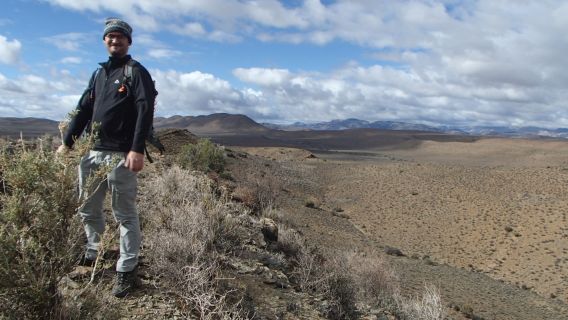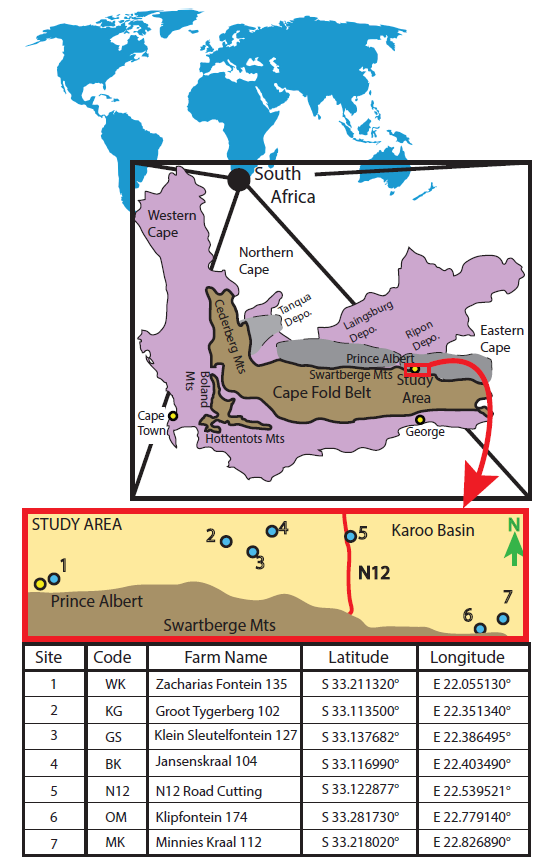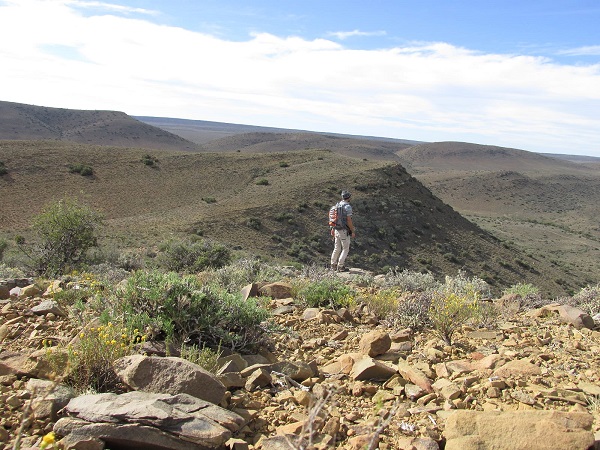Paper citation: Walters, S.W and Tucker, R.T. 2020. Resolving cryptic stratigraphy in the Ecca Group, Karoo Basin, South Africa: Elucidating the Ripon and Laingsburg depocenters. Journal of African Earth Science, https://doi.org/10.1016/j.jafrearsci.2020.103913.
For decades the Great Karoo was not just a fascination for farmers seeking solitude, but for geologist alike as it contains one of the world's most pristine sedimentological successions during the time when all the continents were still together as the super continent Gondwana. With the Karoo completely covered in water around 270 million years ago, this succession slowly captured the transition from a deep-marine environment to a thriving river dominated terrestrial environment. Within this deep-marine setting, three distinct depocenters occur where sediments were deposited deep into the basin through a mechanism called turbidity currents.

MSc S Walters during field work in his study area
Walter's thesis study focused on comparing and correlating two of these depocenters, the Laingsburg and the Ripon, in order to understand how these separate depocenters came to be and how they relate to one another. This was done by studying the outcrop of these deep-marine sedimentary rocks and how it varies laterally across the depocenters as well as looking closely at where these sediments actually derived from. Thanks to a few tiny grains of the mineral Zircon within these rocks, we were able to determine that these two depocenters actually had slightly different source material. During the time when Gondwana was still a single continent, South Africa was enclosed by various terrains which now have become South America and Antarctica. These would have been the sources to most of the Karoo sediments at that time. By looking at the different ratios of radioactive decay elements within these Zircon grains, we could extract ages of when these minerals formed as well as differences in how they formed. Together with the physical relationship between the sedimentary rocks and the different types of grains, we have discovered that the Laingsburg depocenter and the Ripon depocenter, although slightly different in source, interfingers around the area between Prince Albert and Willowmore.

This helped us to better understand the depositional environment in this region around 270 million years ago as well as provide a more detailed geological map of the area. There is still much to be discovered, but getting a glimpse into the vibrant world of Gondwana remained fascinating during his thesis studies. The above-mentioned findings are “In Press" with the Journal of African Earth Sciences. Currently, Mr Walters is a Senior Geologist at IMDH, working in the offshore diamond industry.

MSc S Walters during field work in his study area

